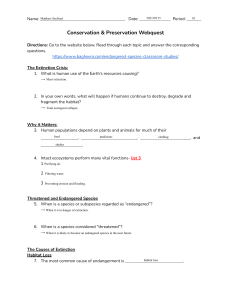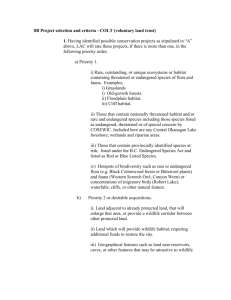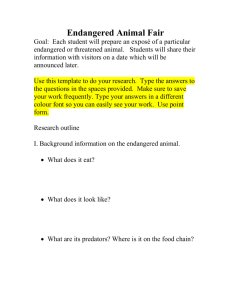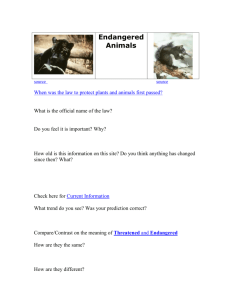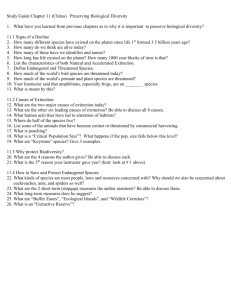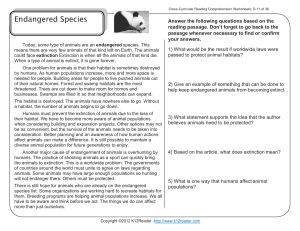Wildlife Management
advertisement
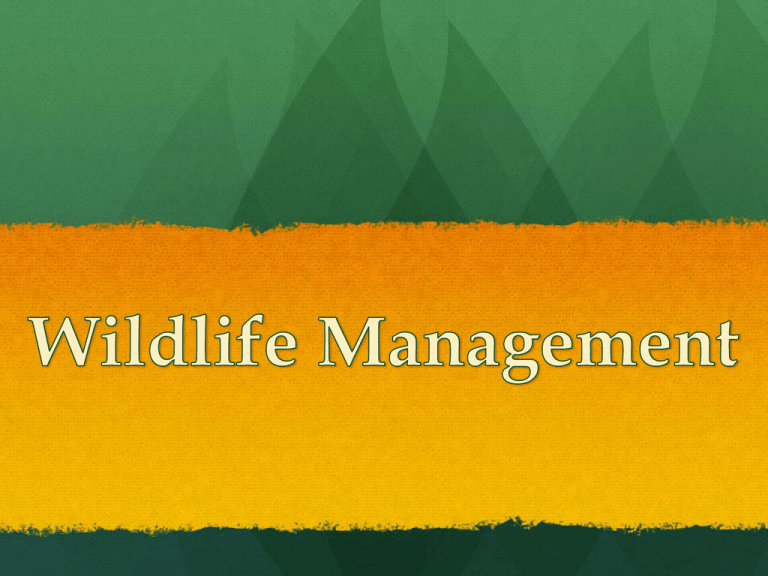
What is an Animal’s Purpose? Animals exist because they have evolved certain traits that have enabled them to survive the eons of time. They are all part of some complex food chain in some very complex ecosystem. Animals did not evolve to serve a purpose for humans. Animals are not “evil” or “good” – that’s just the way they evolved. Serious zoology students must learn not to apply human moral values to animal life. All creatures need preserving. How many are there?? 1.8 million named (Estimates are up to 30 million possible) To understand animals and make good management decisions, you need to know everything possible about that animal. This information, the complete ecology of the animal, is called its ecological niche. Think of its niche as the animal’s “job description”. Where the animal lives is called its habitat. Think of its habitat as its “address”. Characteristics of Threatened/Endangered Species 1. 2. 3. 4. 5. 6. 7. Large Size (Elephants, Whales) Dietary Specialists (Panda, Koala) Low Reproduction Output (Sharks) Habitat Specialists Small Population Size Limited Geographic Distribution Economic/Commercial Value (Beaver, Crocodile, Elephant) Panda Koala California Condor Bald Eagle Florida Panther Indiana Bat Fringed Orchid Franklin’s Ground Squirrel Wildlife Management Techniques For species that are threatened/endangered: 1. Preserve/Expand Habitat (Best Option!) 2. Captive Breeding Program 3. Major fines/jail if injured or killed Wildlife Management Techniques For “pest” species (population too large, exotic species, health hazards): 1. Trap/Poison 2. Egg Shaking - Done to goose eggs 3. Birth Control - Release sterile ones (moths, flies) Critically Endangered - Considered to be more than a 50% chance of extinction in 10 years or three generations. Endangered - More than a 20% chance of extinction in 20 years or 5 generations. Vulnerable - Greater than 10% chance of extinction in 100 years. Near Threatened - Species close to qualifying for a threat category or judged likely to qualify in the near future.

